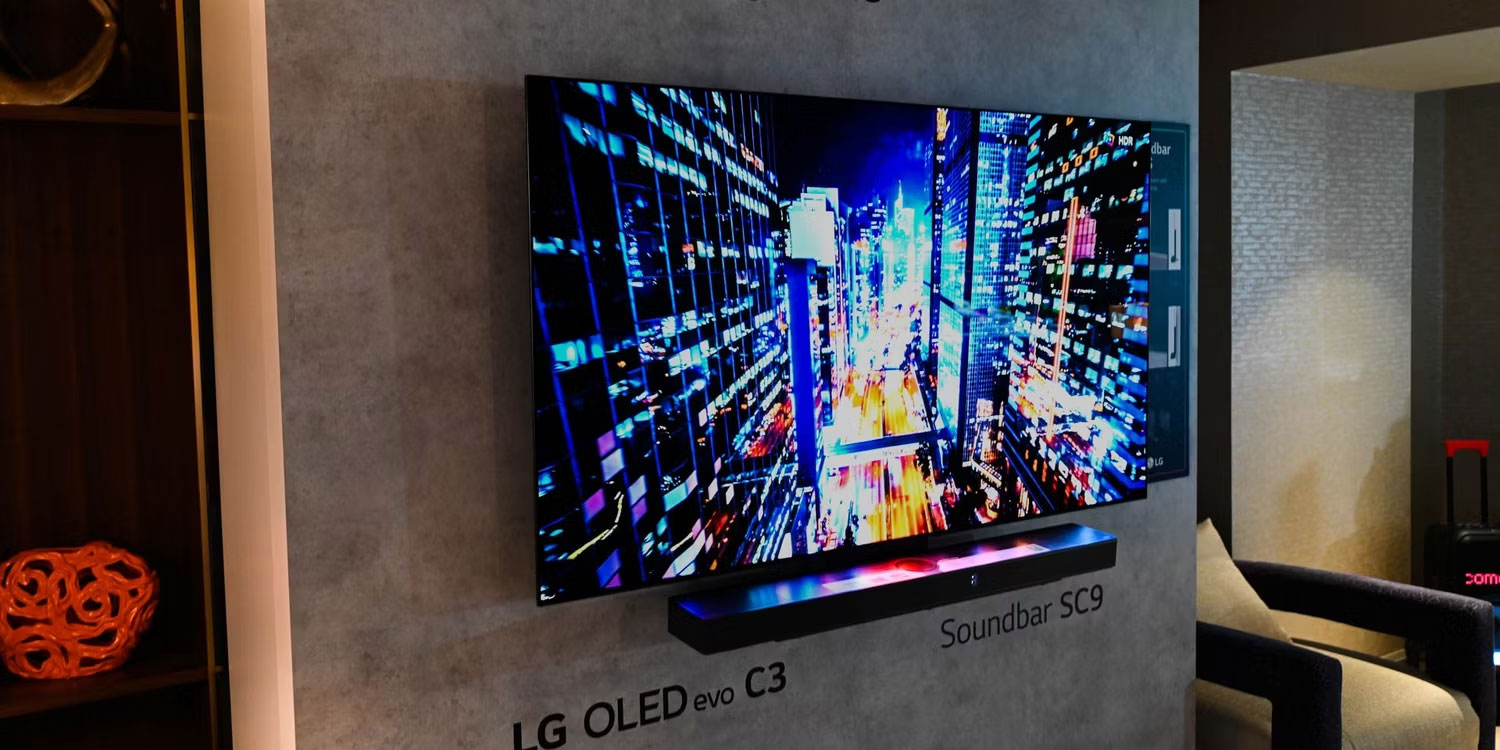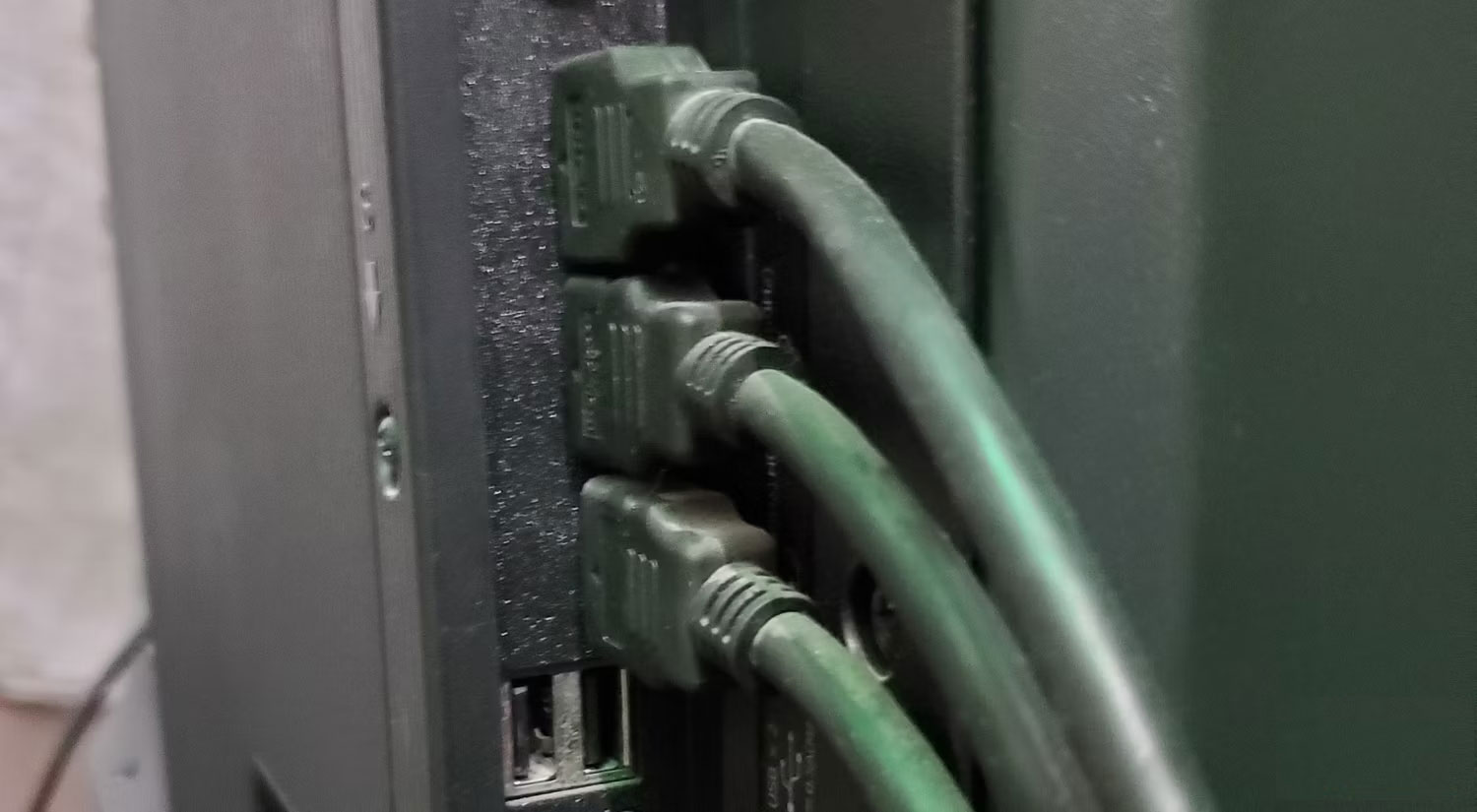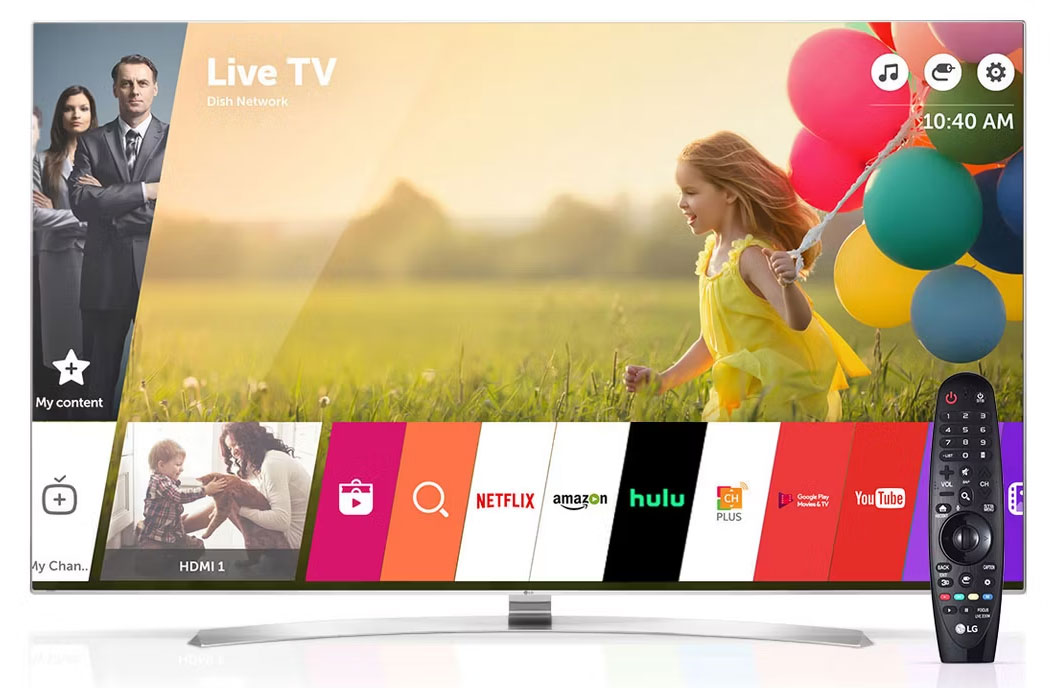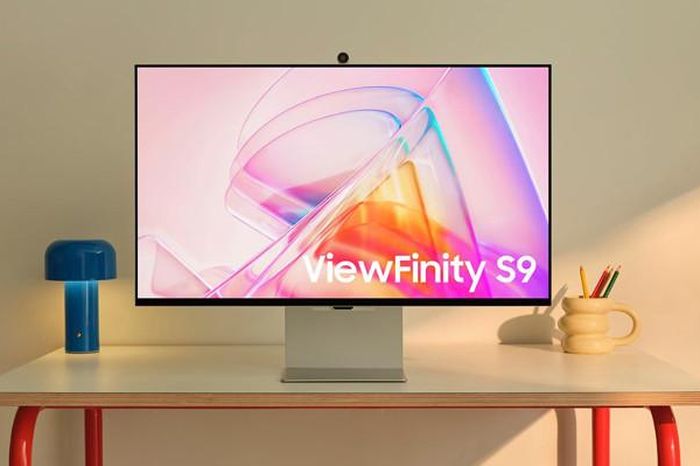Don't buy a new TV without these 8 features!
With so many TV brands available today, it's easy to get lost in the maze of options. Before buying your next screen TV, check to see if it has the following features.
1. OLED or QLED screen

An OLED or QLED TV is a must when buying a new screen. OLED is the best choice if you're looking for the deepest blacks, the most vivid colors that really pop on the screen, and incredibly sharp details to fully immerse yourself in your movies and shows. . However, that great picture quality comes with a hefty price tag - some OLED models cost thousands of dollars. And there is a risk of image burn-in after about 5 years of use.
However, if you want incredible quality without breaking the bank, Samsung's QLED TVs are great. While they can't compare to OLED, QLED displays have incredible brightness and color thanks to backlighting and quantum dot technology that makes colors pop. In addition, you also get a wide viewing angle so a large group can enjoy the show together. The best part is that there is no risk of burn-in issues like with OLED.
2. High Dynamic Range (HDR)
When it comes to High Dynamic Range (HDR), there are many standards to consider. HDR10 is the basic standard - it supports 10-bit color and is bright at around 1,000 nits.
Dolby Vision is a step up from HDR10. With Dolby Vision, brightness adjusts with each scene so dark scenes can get darker and bright scenes can really stand out. It uses "dynamic metadata control," which means the TV knows how bright each part of the movie will look. Dolby Vision screens have a brightness of over 1,000 nits and support 12-bit color, although most TVs today reach 10-bit.
HDR10+ is located between HDR10 and Dolby Vision. Like Dolby Vision, it allows changing the brightness level when playing content. HDR10+ is open source, royalty-free, and is growing in popularity as support increases.
3. Anti-glare
If you find yourself squinting to see what's happening on the TV or constantly scrolling, trying to find the perfect viewing angle, then an anti-glare screen is probably what you need.
An anti-glare screen reduces the amount of light reflected off its surface. Instead of light reflecting back, more light is transmitted through the screen so users can see the image clearly. The result is a much more comfortable viewing experience no matter where you sit or what the lighting conditions are in the room. However, the downside is that the anti-glare coating can sometimes make images look a bit blurry or grainy, especially with bright colors. That's because the coating scatters light to minimize reflections, which can reduce sharpness a bit.
4. Multiple HDMI ports

Although most new TVs have at least a few HDMI ports, choose a TV with 3 or more ports. That way, you won't have to constantly unplug and replug game consoles, streaming devices, and Blu-ray players when you want to change what you're watching.
Also, pay attention to which version of the HDMI port is. HDMI 2.1 is becoming more popular and supports higher quality 4K/HDR video with super smooth frame rates of up to 120 fps. It also has exciting features for next-gen gaming on PS5 or Xbox Series X, like Variable Refresh Rate and Auto Low Latency Mode.
5. Intuitive operating system

Nowadays, almost any TV has "smart" capabilities, meaning it can access streaming apps, connect to WiFi, etc. However, not all platforms All smart TV platforms are created equal. Some operating systems are slow and laggy, with outdated interfaces that aren't designed with an intuitive user experience in mind.
Therefore, it is advisable to research the smart platforms that the brand is considering purchasing. Look for platforms with great interfaces, plenty of app support, and positive reviews for intuitive navigation. Roku, Android TV, TizenOS, and LG's webOS are good options.
Also, take the time to test the remote and how well it interacts with the operating system before buying a new TV.
6. Energy efficiency
If you're looking to buy a new TV, look for the Energy Star symbol. That certification means the product meets energy efficiency standards. Also check your TV's energy consumption statistics, which are usually listed somewhere on the product or in detailed information online. TV models with low power usage will help save money on electricity compared to older TVs that operate less efficiently.
Screen size also affects the amount of power a TV uses, with larger TVs often using more power. A large 75-inch TV will use more electricity than a 50-inch TV. So if screen size is not a priority, choose a more compact option to save power. LED and OLED screens are also greener than older LCD and plasma screens.
Also, pay attention to any "eco" or energy-saving modes the TV has. Look for features that automatically reduce brightness when there's no movement or content for a moment. You can even unplug your TV when it's not in use, which can make a difference over time.
7. Integrated voice control
Gone are the days of frantically searching for the remote control whenever you want to pause what you're watching or change a program. Now just say, "Hey TV, pause" or "Lower the volume" and you're done. This is great when you're busy, like cooking dinner in the kitchen but want to keep an eye on a game. Just ask the TV to do it instead of stopping what you're doing.
Many major TV brands have models that allow voice control of the screen. For example:
- Samsung TVs work with Bixby, Alexa, and Google Assistant.
- LG TVs have their own AI called ThinQ, which also connects to Alexa and Google Assistant.
- Sony TVs work well with Google Assistant and Alexa.
- Alexa and Google can also operate Hisense and Philip TVs.
Just make sure the specific TV model you're looking to buy has voice control.
8. Bluetooth connectivity
Bluetooth on your TV is a game-changer if you like staying up late watching shows without disturbing anyone who's sleeping. Nowadays, many new TVs have Bluetooth functionality, but you should still check carefully before buying.
Bluetooth is convenient for more than just private music listening. It allows the TV to wirelessly connect to all types of content, such as speakers, soundbars and phones, to enhance home entertainment. Plus, there will be no more clutter caused by cables connecting the TV to other devices. Just remember that Bluetooth isn't perfect - it doesn't have a long range, and not every device can connect to each other. So when buying a TV, keep in mind the special Bluetooth requirements to find a device that is suitable for what it will connect to.
You should read it
- So and should not care what technologies on TV
- How to know if the TV is connected to the phone?
- MyTV Multiscreen - the perfect multi-screen feature on the rise of technology television
- Techniques of choosing to buy television sets .... NET
- Harmful myths when adjusting the TV definition
- Why must I set the correct date and time for Smart TV?
- 7 mistakes to make when cleaning the TV screen
- How to turn on sports mode on TV to see the World Cup smooth
May be interested
- The latest features of GNOME 40
 gnome 40 includes bold design changes and a host of new features. in this article, tipsmake will join you in reviewing the best features among them.
gnome 40 includes bold design changes and a host of new features. in this article, tipsmake will join you in reviewing the best features among them. - The 15 most useful features will appear on iPhone and iPad this fall
 in apple's annual conference for past application developers, the company announced many new and unique features in the iphone and ipad that appeared this fall. please tipsmake.com to list 15 most useful features offline.
in apple's annual conference for past application developers, the company announced many new and unique features in the iphone and ipad that appeared this fall. please tipsmake.com to list 15 most useful features offline. - 7 AI Features You Really Need on Your Smartphone
 what ai features do you really need on your smartphone to speed up your workflow or make your life easier and not just be a gimmick?
what ai features do you really need on your smartphone to speed up your workflow or make your life easier and not just be a gimmick? - 9 Underrated Android Features You Probably Aren't Taking Full Advantage Of
 google often quietly adds user-friendly features to android. some of these features take a little getting used to, but they're all worth exploring.
google often quietly adds user-friendly features to android. some of these features take a little getting used to, but they're all worth exploring. - 8 Great Hidden Features in iOS 26
 apple's ios 26 comes with a new liquid glass design and some new apple intelligence features. but the hidden features scattered throughout are arguably more interesting.
apple's ios 26 comes with a new liquid glass design and some new apple intelligence features. but the hidden features scattered throughout are arguably more interesting. - 6 Powerful Excel Features Most People Never Use
 even the simplest spreadsheets—budgets, lists, trackers, etc.—can benefit from the powerful features in excel that people often avoid because they seem too complicated.
even the simplest spreadsheets—budgets, lists, trackers, etc.—can benefit from the powerful features in excel that people often avoid because they seem too complicated. - 7 Windows 11 features that should be used more often
 windows 11 has been out for a while, but there are still some hidden gems inside the system that people haven't made the most of it. there may be some features of microsoft's latest operating system that you should familiarize yourself with to get the most out of it.
windows 11 has been out for a while, but there are still some hidden gems inside the system that people haven't made the most of it. there may be some features of microsoft's latest operating system that you should familiarize yourself with to get the most out of it. - Windows 10 Redstone 4: New features and changes are waiting for you?
 version 1803, redstone 4, officially named windows 10 spring creators update is the next major release, bringing new features and improvements. although still in development, there have been some preview revealing upcoming changes on windows 10.
version 1803, redstone 4, officially named windows 10 spring creators update is the next major release, bringing new features and improvements. although still in development, there have been some preview revealing upcoming changes on windows 10. - 15 interesting features to use in Microsoft 365
 microsoft 365 comes with a complete list of tools that will help you and your colleagues be more productive. microsoft 365 is also always adding new features to help optimize users' work and personal lives.
microsoft 365 comes with a complete list of tools that will help you and your colleagues be more productive. microsoft 365 is also always adding new features to help optimize users' work and personal lives. - 10 most interesting features in Windows 7 for IT professionals
 in this article we will give you 10 features that are selected as direct features for developers in windows.
in this article we will give you 10 features that are selected as direct features for developers in windows.










 Why are 8K TVs still not really necessary in 2024?
Why are 8K TVs still not really necessary in 2024? 7 things to consider before using your TV as a computer monitor
7 things to consider before using your TV as a computer monitor Enhance your experience with the ViewFinity S9 monitor and T7 Shield portable hard drive
Enhance your experience with the ViewFinity S9 monitor and T7 Shield portable hard drive What is HDR10+?
What is HDR10+? 4 easy ways to connect your new Soundbar to your TV
4 easy ways to connect your new Soundbar to your TV How to project Android screen on TV is extremely easy
How to project Android screen on TV is extremely easy